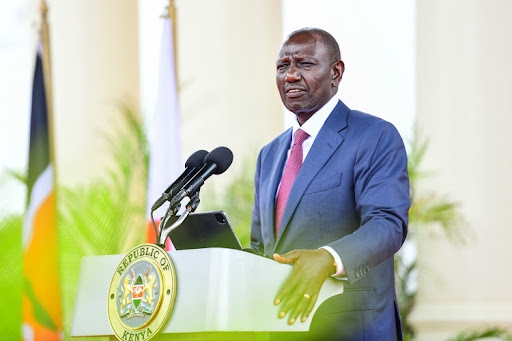A city planner has advised the Nairobi county leadership to avoid knee-jerk reactions and put in place a long-term strategy on how to address persistent flooding.
Town and County Planners Associations chairman Mairura Omwenga yesterday faulted plans unveiled on Monday by Nairobi Governor Johnson Sakaja to counter El Nino, terming them ‘knee-jerk reactions’.
“There is a need for a long-term strategy for drainage for the city to handle flooding,” Omwenga told the Star.
Omwenga said most of the floods to the city are coming from counties outside the city.
He said most of the floods are from Kiambu, Kitengela, Athi River and Ngong, among other towns.
The El Niño — warmer water in the central and eastern Pacific Ocean — influences weather globally and is likely to cause heavy rains in Kenya from September or October, according to the Kenya Meteorological Department.
Every time it rains, most roads in the city are impassable.
This is because the drainage systems in the once-green city in the sun have been filled with illegally dumped garbage.
Whenever rains pour, residents wade, slog, hop, skip and jump to cross flooded streets, while flash floods and stagnant water have been a common sight.
The rains expose the old, damaged, clogged and overflowing drainage system built for a much smaller population about 100 years ago.
Some of the roads in the city turn into rivers.
On Monday, Sakaja unveiled 2,500 environmental officers contracted by the city to help unblock drainages, do clean-ups as well as green the city.
“The first and most important measure is the cleaning and draining of our drainages to avoid flooding,” Sakaja said at Uhuru Park while unveiling the El Nino plan.
“The recruitment of 3,500 environmental officers to clean and unclog the drainages goes a long way to ensure our preparedness for the El Nino rains.”
Sakaja said 1,000 more young people will be contracted to give a helping hand to the few and aging county employees.
The county boss also provided the enlisted youth with some equipment that they will use to undertake their work.
These included 1,200 wheelbarrows, six fire engines, five flushing units, five ambulances, eight excavators, four exhausters and 60 trucks (27 new and 23 old).
Sakaja also announced that there will be a mapping exercise to map out unsafe buildings.
As a result, some residents will be evacuated before the flooding begins.
“We will identify buildings that pose a flooding threat and we will act accordingly, without fear or favour,” he said.
Sakaja said an emergency number that will be used to report emergencies is being set up and will be announced soon.
The county boss also announced that the vulnerable in the informal settlements might have to be evacuated.
A number of them have their structures in riparian areas.
Former Nema boss Dr Muusya Mwinzi had listed areas set to be hit hard by the impacts of El Nino as including Kibera, Mukuru slums, Mathare, Kiambiu and Mukuru kwa Njenga.
To address this issue, Sakaja has unveiled a plan in preparation for the El Nino.
The Ministry of Health has already announced that it will in November begin distributing millions of mosquito nets following warnings of a spike in mosquitos during the El Niño rains.
At least 10.2 million treated nets will be distributed from November until July 2024.
Global Fund, which is paying for the nets, nullified the tender to procure them early this year and offered to do it directly to its own procurement wing, wambo.org, following corruption allegations.
The nets cost at least Sh3.7 billion.
The World Health Organisation asked countries to prepare for possible outbreak of diseases, such as dengue and malaria, due to the high probability of heavy El Niño rains in 2023 and 2024.
Director general Tedros Ghebreyesus said the phenomenon could influence the breeding of mosquitoes, spiking the spread of diseases such as malaria, dengue, Zika and chikungunya.
"WHO is preparing for the very high probability that 2023 and 2024 will be marked by an El Niño event, which could increase transmission of dengue and other so-called arboviruses, such as Zika and chikungunya,” Dr Tedros said.
He further said climate change is already fuelling the breeding of mosquitoes, and the incidence of dengue has already risen sharply in recent decades.
Malaria, chikungunya virus and dengue virus are endemic causes of fever among children in Kenya, and outbreaks are common in wet seasons.

















